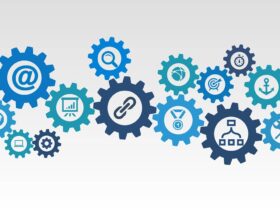In a usage-based billing model, the consumer pays only for the amount and duration they use the product or service, and the final invoice is calculated only at the end of the billing cycle. The metered billing model works for businesses, too, because the revenue matches the actual usage.
Normally, companies adopt the usage-based billing model when:
- The brand suffers because consumers feel the price of the service doesn’t match the service’s value.
- The consumer uses the service but prefers to pay a flat rate, suggesting that the company can monetize the service intelligently to make bigger profits.
A bigger plan shouldn’t look like daylight robbery. Also, consumers shouldn’t feel forced to pay monthly subscriptions for services they don’t use.
According to experts developing usage based billing software by Kansys, the per-use charging model helps companies make their products more affordable and accessible and empower consumers to use the features they need.
3 Crucial Features Make Usage-Based Billing The Go-To Solution For Companies
Usage-Based Billing Is Ideal For Scaling Businesses
Companies may dislike being tied down for months or years to plans that do not offer the variety or flexibility that the business needs to cope with change.
The custom software development benefits are most visible in usage-based billing models. High-quality assets are available on a need-to basis as the company grows and expands its niche. Lower capital expenditure improves the bottom line.
The usage-based billing cycle could include the following options:
- Consumption could be billed as a flat rate, multi-tiered, or roll-over billing.
- You could customize the billing monthly, quarterly, or annual.
- Discounts, promotions, and exemptions can help you to incentivize the consumer.
Usage-Based Billing Increases Customer Loyalty And Customer Retention
Studies confirm that customer loyalty positively impacts profitability. Loyal customers believing in the credibility and trustworthiness of the brand are more open to cross-selling. Repeat customers spreading the word and posting positive reviews increase the conversion rate of pricier items.
A usage-based billing model is an effective tool for building brand loyalty.
- Repeat customers that exceed the spending limit can be charged a pro-rated fee rather than the full amount.
- Consumers should be able to make better choices based on what they can afford and the services they need.
- A high level of customization makes it easier for consumers to leave the service or change the product anytime.
Usage-Based Billing Is Cost-Effective And Productive For Business And Consumer
It’s loss-making for usage-based billing to follow a consistent pricing schedule regardless of the demand. Higher costs in peak seasons can compensate for the lower profit margins in the lean seasons when demand plateaus.
If the metered billing is deployed effectively, companies get the support they need for larger capital outlays to build and sustain their services.
For the consumer, it is the difference between choosing Airbnb to hotel accommodation – you are paying only for accommodation and cleaning, not the various add-ons and services you never use.
The Businesses That Stand To Gain By Shifting To Usage-Based Billing Models
Financial Services: Fintechs are price-sensitive because they process high-volume transactions like payments, accounting entries, and money transfers.
Automobile Insurance: Usage-based car insurance can offer drivers lower premiums if they drive more carefully, adopt best driving practices, and stick to car mileage stipulations. Businesses pay less if their drivers observe driving discipline on the road.
Media Conglomerates: Companies operating video platforms can bill based on data stored and the number of videos streamed over a specific period.
Telecom/Electricity/Utility Companies: Consumers are billed only on usage, regardless of installed capacity. Market reports suggest that utility companies doing metered billing could achieve growth rates exceeding 28 percent by 2026.
Cloud Computing Infrastructure providers: In cloud computing, the services or products are priced as commodities that can be rapidly scaled up or down based on demand. The metered billing model maintains a cost advantage and sustains profitability.
IoT companies: Businesses monetizing the IoT trend stand to generate more than half their revenue from services. Users can be billed only for the data they use and not for the hardware deployed.
Conclusion
When usage-based billing is adopted, a company becomes more versatile and books more profits. Customized packages encourage the business to become dynamic and avail more options to scale and grow. Eventually, it all comes down to companies finding the usage-based billing software right for them and their consumers.










FIND US ON SOCIALS